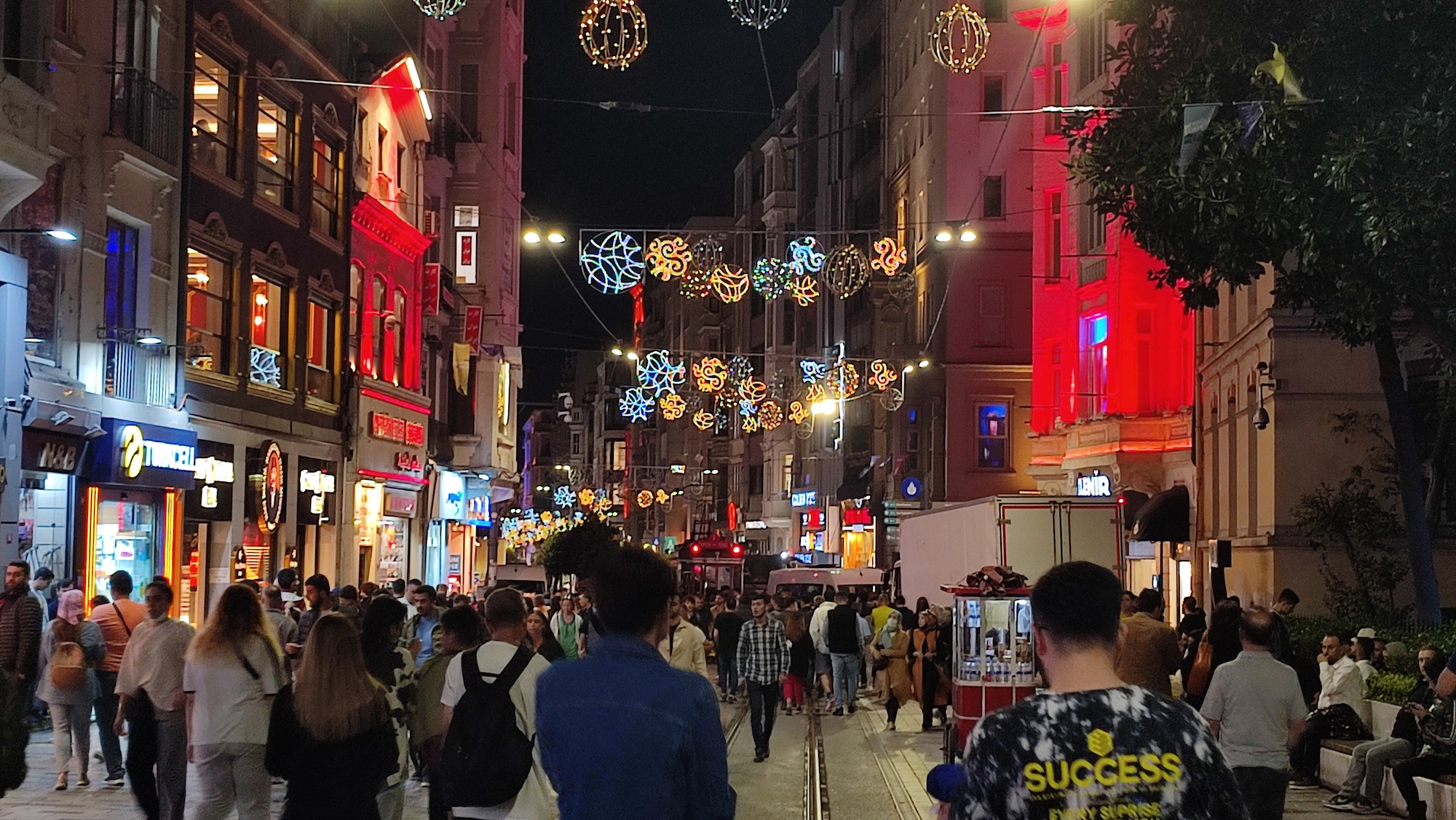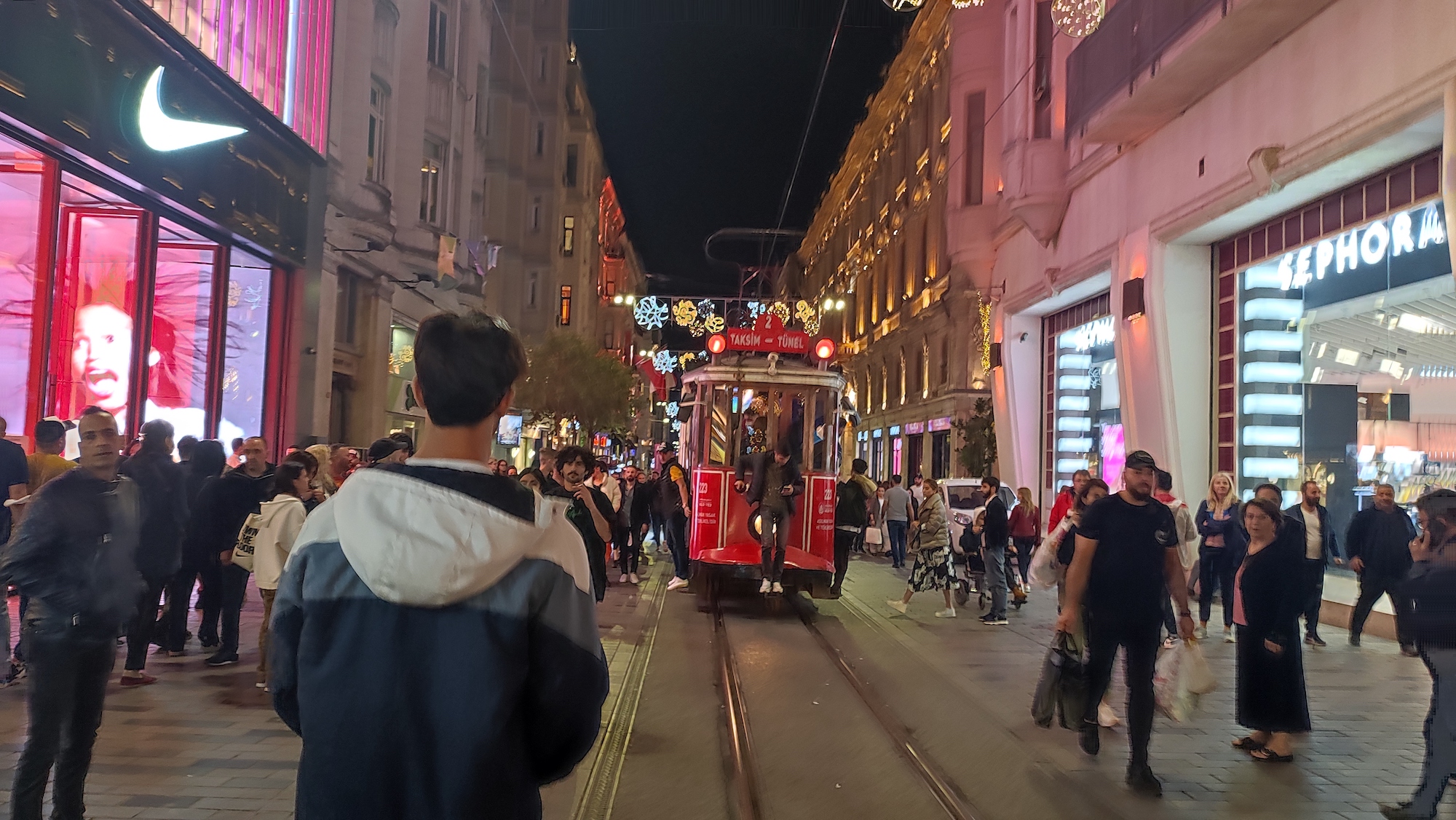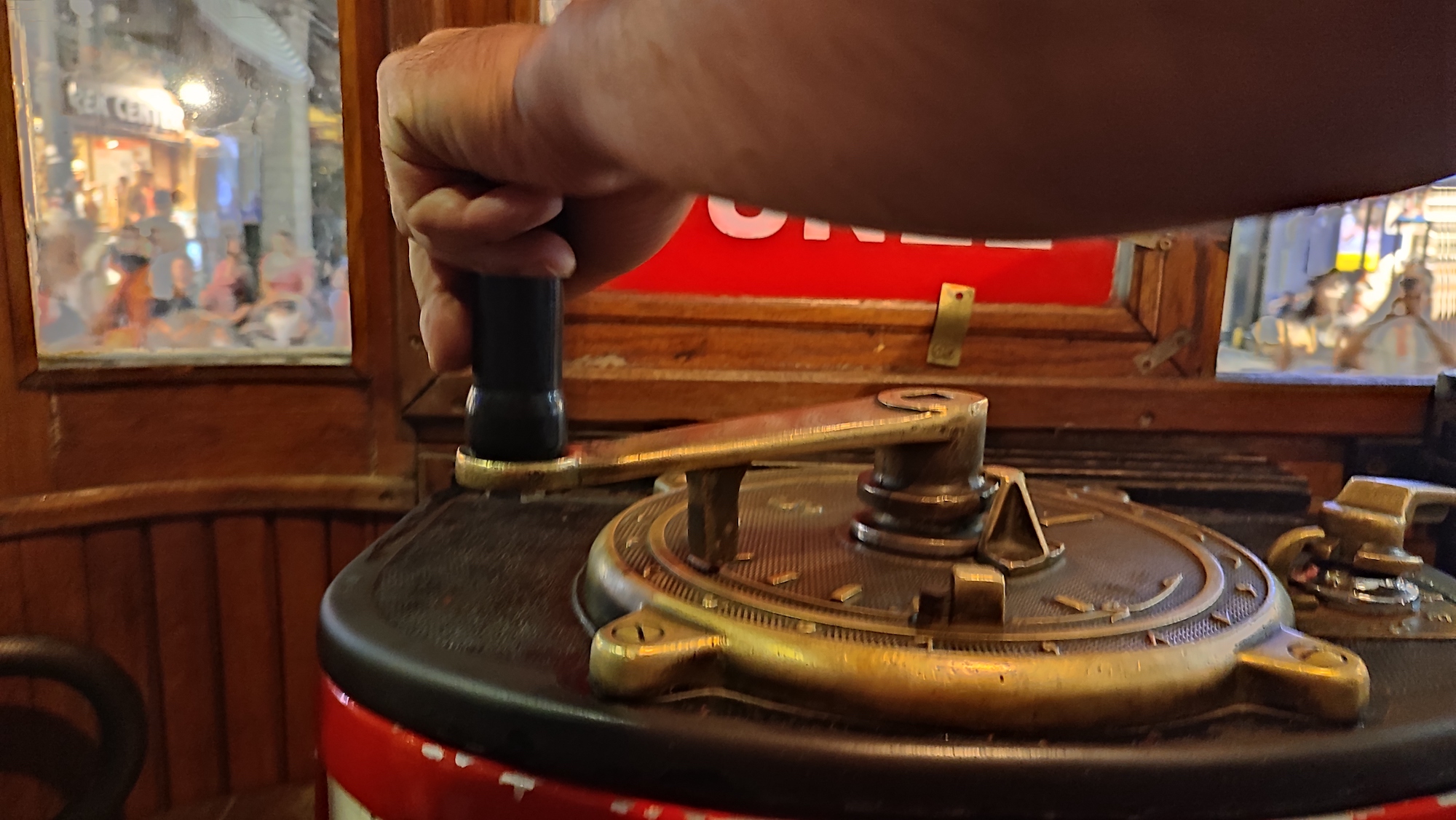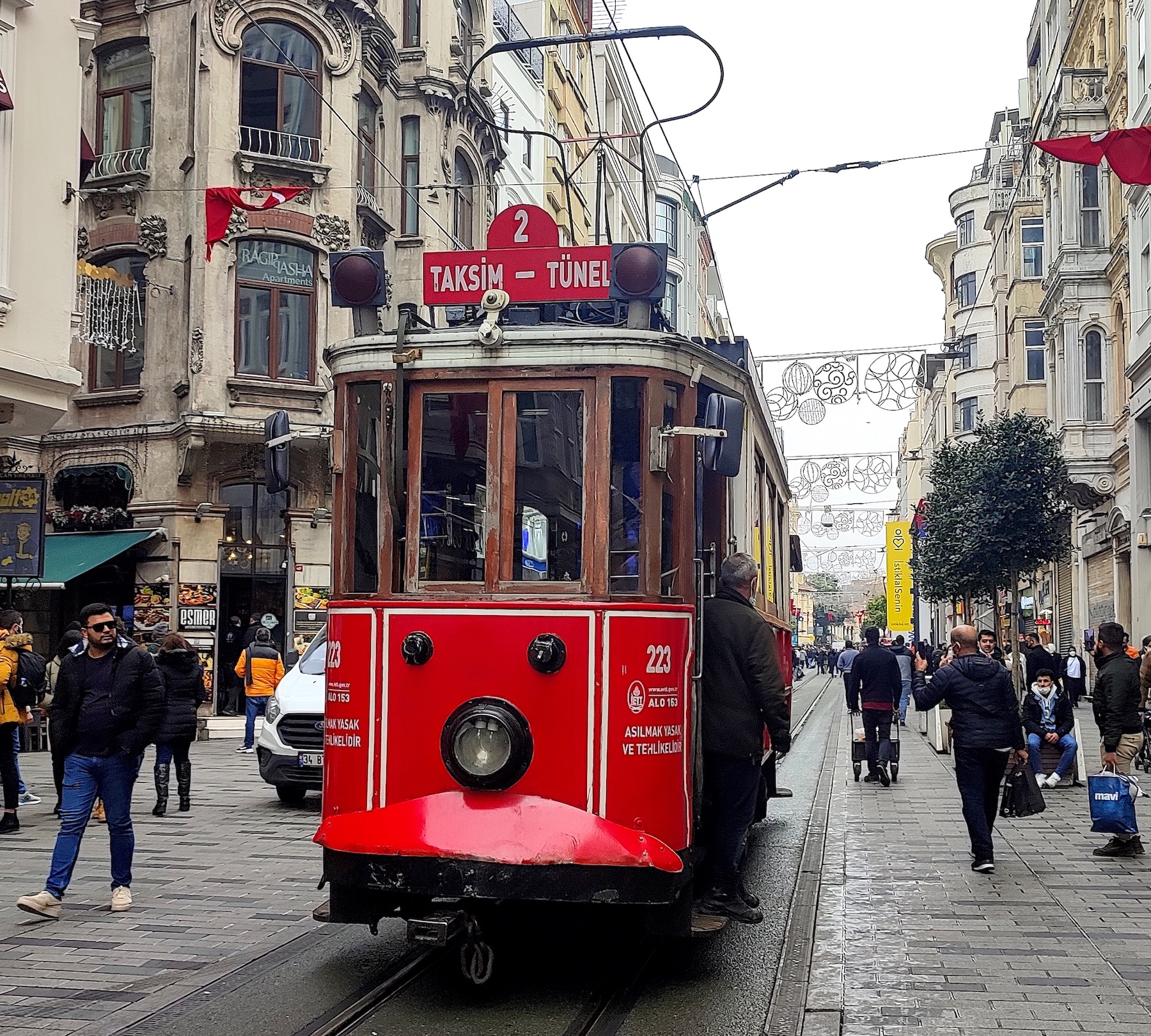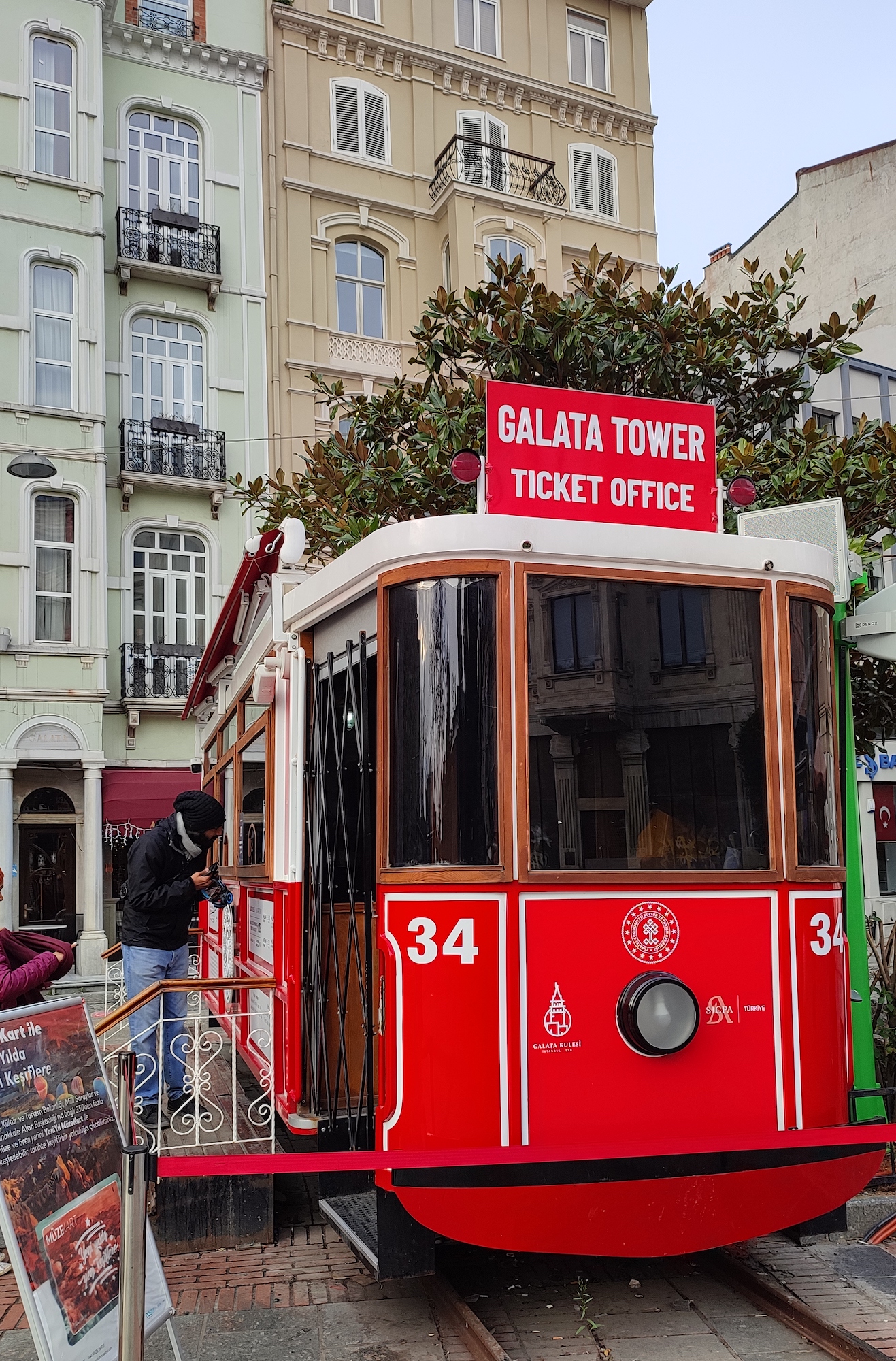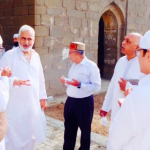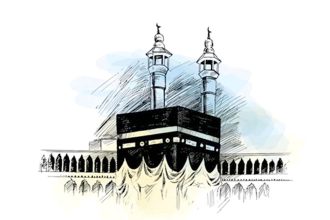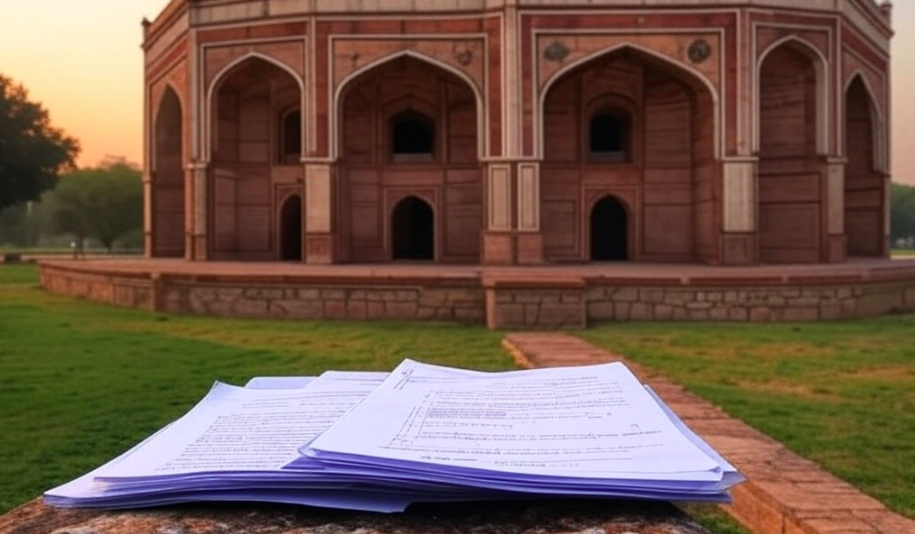I am currently standing on Istanbul’s most famous İstiklal Caddesi (Istiklal Street). This iconic street in the historic Beyoğlu district connects Taksim Square with Galatasaray and Tünel Square. This historic street is busy 24 hours a day. As soon as I stepped here, I felt like I was walking in a lively modern market in Europe. Indeed, this bazaar is a social and cultural hub of Istanbul, where cultures from around the world converge which defines the essence of Istanbul.
There is a great crowd around me. People from different countries of the world are running around me. Yet, amid this vibrant chaos, one voice resonates, cutting through the noise. It is a voice that isolates me in this crowd. For a moment, I feel like I’m not part of the crowd. My body is present in Istanbul, but my heart and mind are completely in India. I envision myself wandering the streets of Kolkata and saying to Mamata Didi, “Didi! Please, don’t let this sound die.” In my view, this sound is definitely the hallmark of Kolkata—a cherished hallmark of Kolkata’s heritage and charm. A lovely echo of Kolkata’s heritage feels alive in my heart. It is a sound that has woven everyone in Kolkata into the fabric of their identity. This identity must not disappear.
Lost in nostalgia, I was cherishing the memories of Kolkata when my son Yusuf called me ‘Baba’. His voice gave me a jolt to bring me to the present. The reality hit me hard: the familiar sound of Kolkata trams seemed distant. It is because the decision has been made and this sound will now be strangled. It will be closed forever. I am talking about the sound of trams running in Kolkata since 1873.
Right in front of my eyes is Istanbul’s famous Nostalgic Tram, which is the center of attraction for everyone. It sounds exactly like a tram in Kolkata, India. But this tram is aesthetically more beautiful than the ones in Kolkata and stops slowly enough for tourists to take a picture in front of it. Its importance can be felt from quite a distance in the crowd on this road. Of course, this tram is different from other trams operating in Istanbul.
The pages of history show that the tram service in Istanbul started in 1869; then it was horse-drawn; later it was powered by electricity. It ran like this until 1966 when it was closed. But after 24 years, at the end of 1990, Istiklal Street was again closed to large vehicle traffic, and the nostalgic tram was started again so that the tram remains in the minds of all the people who come for tourism from all over the world. The memories of this tram have become a tourist attraction.
Albert Einstein is said to have thought up the theory of relativity while riding a Zurich tram, highlighting the profound connections that can emerge from a simple journey. This opportunity should also be preserved for the writers of Kolkata who might find inspiration in the rhythmic sway of Kolkata’s trams. Nonetheless, the Kolkata tram has always provided an apt symbol for the city of Kolkata, evoking both poetry and protest.
I am worried about how any writer will be able to write a story based on a tram like Pritish Nandy wrote the story of “Pijushbabu”. The whole story revolves around his memories while traveling on a Kolkata tram, imagining himself in a jet-powered plane. Now where will today’s story writers sit and remember such memories?
I’m curious how anyone can now compare Kolkata to New York City. Famous film director Mira Nair remarked in an interview, “I felt these two great cities of the world, New York and Calcutta, mirrored each other in specific ways… Both cities are stitched by rails; the tram tracks of Calcutta, the elevated trains of New York, and the subways of both. When alerted by the clang and rattle of the Calcutta tram crossing the main thoroughfare of Chowringhee, I would look across and I could see directly through the tram’s windows on Rash Behari Avenue to the shops and shoppers of Gol Park on the other side. Just like my mornings on the subway platforms of New York City, with passengers across the platform going in opposite directions, then, as each train came in to disgorge and pick up, wiping the slate clean.” Her interview was published in The Times of India on 18 March 2007.
Istanbul had understood the importance of trams. This is why a completely separate tram line was inaugurated in 1992, extending the tram system on the European side of Istanbul to include a modern tram line. This line, now called the T1 line, runs on the same alignment where the tram last ran in 1956. In 2003, the tram also returned to the Asian side of Istanbul as a heritage tramway on the old closed route. This line is now known as the T3 Tram Line (or Kadıköy-Moda Nostalgia Tramway). In 2007, another modern tram line on the European side, called T4, was opened, using high-floor light rail vehicles (LRVs). In 2021, the first catenary-free tram line in the city opened between Alibeyköy and Cibali on the European side using modern low-floor trams. The line is now being extended to Eminönü, where it will meet T1. On 30 August 2023, Istanbul inaugurated an important stop on one of its newest tram lines, Eminönü-Cibali Station, which is a vital component of the Alibeyköy-Eminönü Tram Line.
Istanbul is currently advancing several tram projects, including the significant “AnadoluTRAM.” This new tram line is designed to connect the districts of Üsküdar, Kadıköy, and Maltepe. According to a joint report from the Traffic and Transportation Commission and the Public Works and Reconstruction Committee, the project aims to remove wheeled vehicles from traffic along its 21.3 km route, focusing heavily on pedestrian-friendly road arrangements. Additionally, construction has begun on a 3.2 km section of tramway in central Istanbul, linking Feshane to Bayrampaşa Meydan on tram line T5.
As of February 26, 2024, the T6 Sirkeci–Kazlıçeşme tramway line has been launched, spanning approximately 8.3 km (5.2 mi). The Üsküdar–Harem Tram Line will also be launched soon. The craze for trams can also be gauged from the fact that in Istanbul’s Bahçelievler district, Şirinevler Meydanı, where there are no tramway tracks, a ‘nostalgic tram’ was installed in 2023 on the occasion of the 100th anniversary of the Republic of Turkey. The service was started to keep the memories of the tram alive in people’s hearts. Because the government here believes that ‘trams are one of the best examples of maintaining tradition.’ According to Istanbul Metropolitan Municipality’s 2022 Annual Report, around 3 million people are using this tram service in Istanbul every day.
Istanbul stands out for modernizing its tram system by integrating advanced technology. The city boasts a comprehensive public transport network that includes not only the metro and buses, but also double-decker buses, trains, Marmaray, boats (ferries), metro buses, and even a ropeway. This diverse range of options allows residents and visitors to navigate the city easily.
Kolkata should also modernize its tram system instead of shutting down the tram. Limiting the heritage tram to just a route from Dharmatala to Maidan will not attract local users, as the distance is too short. To make the tram more appealing, it should be extended to Khidirpur to ensure it serves tourists and local commuters. Otherwise, the government may face renewed pressure in five years to shut it down if ridership remains low.
Ever-growing suburbs of Greater Kolkata could be connected with modernized trams, linking them to metro routes, particularly covering those pockets left behind in metro rail expansion. For example, Garia and Kamal Gazi area could be connected with Narenderpur and Sonarpur to cover the new residential blocks coming up on both sides of Adi Ganga. Similarly, tram lines could connect various pockets of New Town Rajarhat, or Budge Budge and Mahestala with Behala. Connecting these pockets through reliable and eco-friendly public transport would not only decongest the traffic in the city but would also take the load off the booming real estate prices in the city as people would feel more confident to spread to suburbs as we saw in Istanbul.
Imagine if Kolkata could sustain this rich tradition, drawing on the lessons of cities like Istanbul, where trams are celebrated as integral parts of urban life. It could have also served an economic purpose by utilizing it to attract tourists, just as Istanbul did. Certainly, Istanbul’s tram system can serve as a lesson for the West Bengal government and the Kolkata municipality on how to rehabilitate the defunct tram system using modern technology. This approach can not only improve the city’s traffic but also generate significant revenue, as seen in Istanbul and other cities. There is a pressing need to recognize the value of the tram system and to rejuvenate it, ensuring it thrives in a modern context. Reviving Kolkata’s trams could not only enrich the city’s cultural landscape but also serve as a reminder of its historical roots, connecting past and present in a meaningful way.

